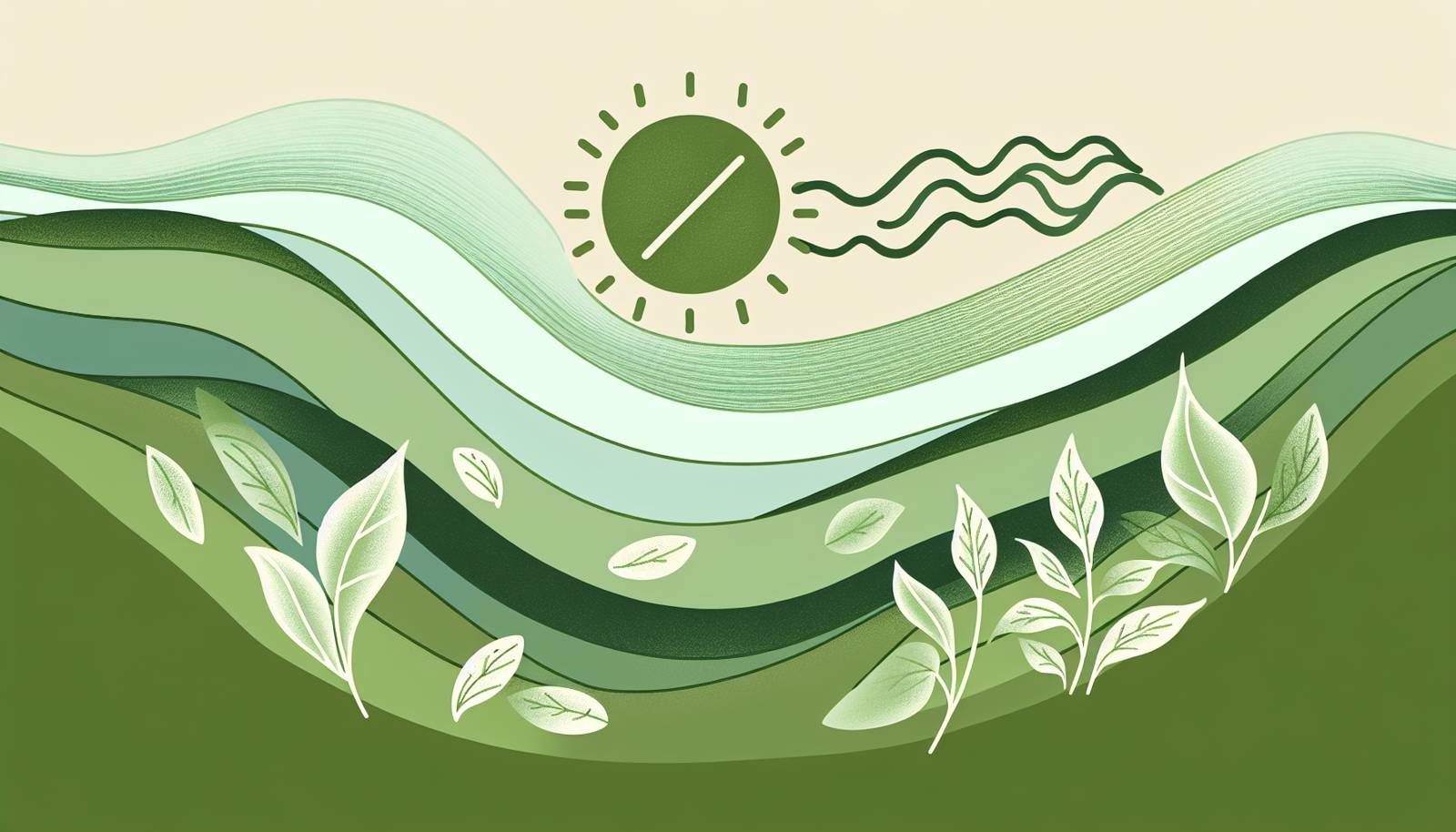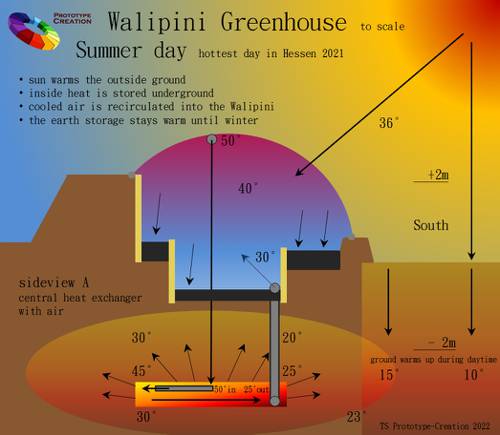
FAQ About Indoor Plant Heating and Cooling Solutions

What is the optimal temperature range for most indoor plants?
The optimal temperature range for most indoor plants is between 65°F and 75°F (18°C and 24°C) during the day and around 55°F to 65°F (13°C to 18°C) at night. This range mimics their natural environment, promoting healthy growth and vibrant leaves. However, it's important to note that different plants have varying needs, and some may require specific temperature conditions.

How do temperature fluctuations affect indoor plants?
Temperature fluctuations can stress indoor plants, affecting their growth and health. Rapid changes in temperature can lead to issues such as wilting, leaf drop, or reduced flowering. Consistent temperatures within the optimal range are crucial for maintaining plant health. Towering temperatures can lead to dehydration, while lower than ideal temperatures can slow down growth or even cause frost damage.

What are common indoor heating solutions for maintaining plant temperature?
Common indoor heating solutions for plants include electric heaters, space heaters, heating mats, and grow lights that emit warmth. Heating mats are often used for seed germination, providing direct warmth to the soil. In colder climates, space heaters and electric heaters can maintain ambient temperatures, but they should be used with caution to prevent drying out the air excessively.

Can air conditioning affect indoor plants negatively?
Yes, air conditioning can negatively affect indoor plants by reducing humidity levels and causing temperature fluctuations. Rapid cooling can stress plants, leading to symptoms like brown leaf edges and wilting. It's vital to ensure that indoor plants are not in the direct airflow of air conditioning vents and to monitor humidity levels, possibly supplementing with a humidifier if necessary.

How can I increase humidity levels for my indoor plants?
Increasing humidity levels can be achieved by using a humidifier, placing water trays near plants, grouping plants together, or misting them regularly. All these methods help create a more humid microclimate around the plants, which is beneficial for tropical varieties that thrive in higher humidity conditions. Monitoring with a hygrometer can help maintain optimal levels.

What are the signs that an indoor plant is too hot?
Signs that an indoor plant is overheating include wilting, curled or scorched leaves, and drying soil despite regular watering. Leaves may also develop brown edges or tips. It's crucial to relocate plants away from heat sources and provide adequate watering and humidity to mitigate these issues.

What are the signs that an indoor plant is too cold?
Symptoms of a plant being too cold include leaf curling, browning, yellowing, or dropping, as well as slowed growth. Some plants may exhibit blackened leaf edges or a mushy texture when exposed to frost or overly cold conditions. It's important to identify these signs early to avoid severe damage to the plant.

Can I use regular household fans for plant cooling?
Yes, regular household fans can be used to cool indoor plants by creating air circulation, which helps prevent overheating and reduces mold growth. Fans can also aid in strengthening plant stems by simulating natural breezes. However, ensure the fans are not blowing directly on the plants, as this can cause dehydration.

How does insulation help in maintaining the right temperature for indoor plants?
Insulation helps maintain a stable indoor environment by reducing heat loss in winter and preventing heat gain in summer. This stable environment reduces the stress on plants caused by temperature extremes. Properly insulated space ensures that heating or cooling systems are more efficient and effective, maintaining consistent temperatures for optimal plant health.

Are there smart technology solutions for monitoring indoor plant environments?
Yes, there are smart technology solutions such as smart thermostats, humidity sensors, and automated grow systems that can monitor and adjust temperature and humidity levels automatically. Apps connected to these devices can alert you to changes in the environment, allowing you to address needs in real time, making plant care more manageable especially in fluctuating climates.

How can sudden changes in temperature affect plant growth cycles?
Sudden changes in temperature can disrupt a plant's growth cycles by inhibiting photosynthesis, root development, and floral production. Consistently fluctuating temperatures can lead to confusion in seasonal behaviors, such as budding or dormancy, which can ultimately reduce a plant's vitality and lifespan.

What role do grow tents play in controlling plant temperature?
Grow tents provide a controlled environment by containing and managing the temperature, humidity, and light conditions required for plants to thrive. They are particularly useful for sensitive plants or early growth stages, offering consistent conditions regardless of the external climate, and are often equipped with fans and heaters for precise climate management.

Is it necessary to adjust plant care routines with seasonal changes?
Yes, adjusting plant care routines with seasonal changes is critical for optimal plant health. During winter, when indoor heating can dry out the air, increasing humidity becomes essential, and during summer, additional shading or cooling might be necessary to prevent overheating. Recognizing these needs helps maintain balanced growth throughout the year.

What are heat-loving indoor plants that prefer higher temperatures?
Heat-loving indoor plants include succulents, cacti, orchids, and some varieties of ferns and palms. These plants thrive in environments that are warmer and can tolerate less humidity. Each type has specific care requirements, and ensuring the right temperature plays a significant role in their well-being.

Are there specific cooling solutions for small indoor grow rooms?
Cooling solutions for small indoor grow rooms include portable air conditioners, exhaust fans, and reflective materials to reduce heat build-up. Proper ventilation is crucial for replacing hot air with cooler air, and reflective materials can help minimize heat absorption from grow lights or external sources.

Can LED grow lights affect the temperature of an indoor plant environment?
LED grow lights can increase the temperature of an indoor plant environment, but they are generally cooler than traditional incandescent or fluorescent lights. LEDs produce less heat, which helps reduce the risk of overheating plants. Positioning LEDs at a safe distance can help balance light exposure and temperature control.

How do ceramic heaters compare to other heating solutions for plants?
Ceramic heaters are effective for indoor plants as they provide consistent and even heating without excessively drying out the air. They are safer compared to some electric heaters that can become too hot. While ceramic heaters are efficient, it's important to avoid direct placement too close to plants to prevent overheating.

What are signs of low humidity affecting indoor plants?
Signs of low humidity include wilting, browned leaf tips, and curled or crispy leaves. Plants may also show poor growth and increased susceptibility to pests. Low humidity can stress plants, which is why introducing humidity solutions or selecting plants suited to drier conditions can be beneficial.

Are there plants that can adapt to varying indoor temperatures?
Some indoor plants, such as pothos, snake plants, and ZZ plants, are known for their adaptability to varying temperatures. These resilient plants can thrive in a range of conditions and require minimal adjustments in care, making them ideal for environments where temperatures fluctuate widely.

How do heating cables work for indoor gardening?
Heating cables are used in indoor gardening to provide warmth directly to the soil, promoting root growth and aiding in germination phases. These cables can be laid under the plants or spread across a growing area to maintain consistent soil temperatures, especially during the cooler months.
